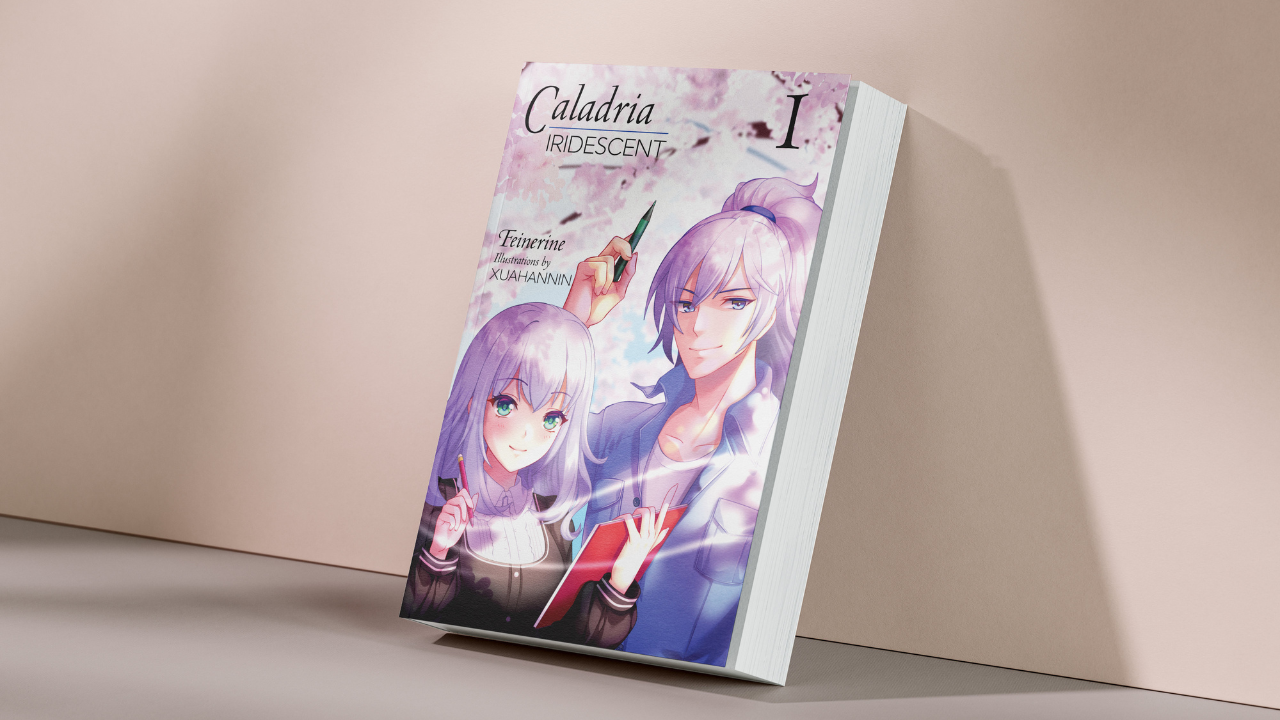
In this guide, typographer, book designer and manga artist Rittsu Kogarasuashi, shares invaluable lessons from her career journey, alongside practical advice to help you master the art of book cover design. Whether you’re just starting out or looking to take your craft to the next level, her insights will empower you to unlock your full potential.
Of course, we all do judge a book by its cover – what kind of designer would refuse to pay attention to the carefully crafted cover design that's been chosen to represent a book? That means the designs on a book cover need to give off the right vibe, and tell the story in a way that makes a reader gravitate towards it. On a crowded bookshelf, or digital marketplace, that's not always easy.
Rittsu’s top 14 tips will guide you toward stunning results and help you elevate your book cover designs to new heights. For more inspiration see the best book cover designs of the month roundup.
What tools do I need?
At the start of her career, Rittsu initially relied on free software to hone her skills, which worked well for her learning. However, as her ambitions grew and her projects became more demanding, she found herself limited by the capabilities of those tools.
Today, whether she’s designing book covers, creating logos, or crafting digital media, she uses Affinity - a professional-grade, budget-friendly software that has since become an essential part of her workflow, enabling her to consistently bring her bold creative visions to life. You can see other software options in the best graphic design software and digital art software guides.
01. Understand the story first
A book cover should encapsulate the essence of the story. Before diving into the design, read the book or discuss its themes with the author. Understanding the plot, its characters, and the emotional tone helps you to create a cover that resonates with readers. Always sketch out a rough design that will lay out where elements will go. This does not have to be complex, just simple geometric shapes. For manga, I focus on capturing the visual dynamism and emotional intensity typical of the genre. Every element, from typography to imagery, should reflect the story’s core message.

02. Embrace manga and anime aesthetics (if relevant to your genre)
Manga and anime styles often feature bold lines, vibrant colours, and expressive characters. Incorporate these elements into your design to appeal to fans of the genre. Experiment with dynamic poses, dramatic shading, and iconic motifs like cherry blossoms or urban backdrops to align with the genre, but balance the visuals to ensure the cover is not overly cluttered, allowing key elements to stand out.
03. Typography is a storytelling tool
In manga covers, typography isn’t just functional - it’s part of the visual narrative. Choose typefaces and fonts that align with the story’s tone: elegant serifs for romance or bold sans-serifs for action. Customise text placement and integrate it with the artwork, such as having titles weave through illustrations or mimic manga-style sound effects. Well-designed typography can add depth to a cover and reinforce the story’s theme.
04. Design for instant appeal
Bookstore shelves are crowded, and your cover must grab a reader’s attention immediately. Therefore, use bold compositions, eye-catching contrasts, and striking focal points to stand out. For manga covers, a character’s intense gaze or a dramatic action scene can draw readers in. Ensure your design is instantly visually impactful, even if it is used as a small thumbnail for online stores.
05. Keep the genre in mind
Different manga genres - shonen, shojo, seinen, and josei - come with their own unique aesthetic expectations. Shojo manga may feature soft pastels and delicate designs, while shonen often employs dynamic poses and bold colours. Tailor your design elements to align with the conventions of the specific genre, ensuring the cover speaks directly to its target audience.
06. Use layering to add depth
Layering techniques can make a cover more visually engaging. For manga-inspired designs, I combine character illustrations with textured backgrounds and typography. I use Affinity to add gradients, halftones, or subtle patterns reminiscent of manga panels, creating depth and dimension in the design. This approach evokes the layered storytelling of manga itself.

07. Tell a visual story
Covers can serve as a mini narrative on their own. Create a scene or moment that hints at the contents of the full story, without revealing too much. For instance, showcase the protagonist in a dramatic pose, paired with a symbolic element from the plot, which the reader will discover the meaning of. This approach teases their curiosity and encourages them to pick up the book.
08. Incorporate cultural elements
Manga often draws inspiration heavily from Japanese culture, so it’s a good idea to incorporate visual motifs like kanji characters, traditional patterns, or iconic landscapes to give the cover an authentic feel. However, these cultural elements can also be balanced with universal design principles, to appeal to a broad audience of readers.
09. Play with composition
Dynamic compositions are a hallmark of manga covers. Make use of asymmetry, bold diagonals, and overlapping elements to create energy and motion in your cover. Experiment with unconventional layouts to make your cover stand out, but ensure the overall design remains balanced and clearly readable.
10. Focus on character design
Characters are central to manga storytelling and are often the highlight of the cover. Ensure the protagonist is depicted with expressive details that reflect their personality and role in the story. Use bold lines, rich colours, and engaging poses to make them unforgettable for the reader.
11. Choose colours with intention

Colour schemes should align with the book’s mood and genre. Warm tones work well for romantic or adventurous stories, while cooler shades fit darker or introspective themes. For manga covers, vibrant colours can reflect the high-energy nature of the medium, while subdued palettes add sophistication for more mature titles.
12. Experiment with iconic motifs
Integrate motifs that resonate with the genre, including symbols that not only tie into the genre’s wider aesthetic but also provide subtle hints about the story’s specific setting and themes. But remember to use these elements sparingly, to avoid overwhelming the design.
13. Don’t overlook the spine and back cover
While it’s essential that the cover is striking and grabs a reader’s attention, the spine is crucial for books on crowded shelves and the back cover is what draws the reader into what the story may contain. Some would even say these are the most crucial elements, as the spine is the section of the book that is viewed among others on the bookshelves. Therefore, I recommend using bold typography and small visual elements, like character silhouettes, to make the spine even more visually appealing, while making sure the back cover is properly designed – legibility and readability matter, along with compelling copy.
14. Test your design with fans of the genre
Get feedback from readers or other designers familiar with the genre. Their insights can help you to refine the design to ensure it resonates with the target audience. Honest critiques can often highlight overlooked details, helping you achieve a polished and compelling final cover.







